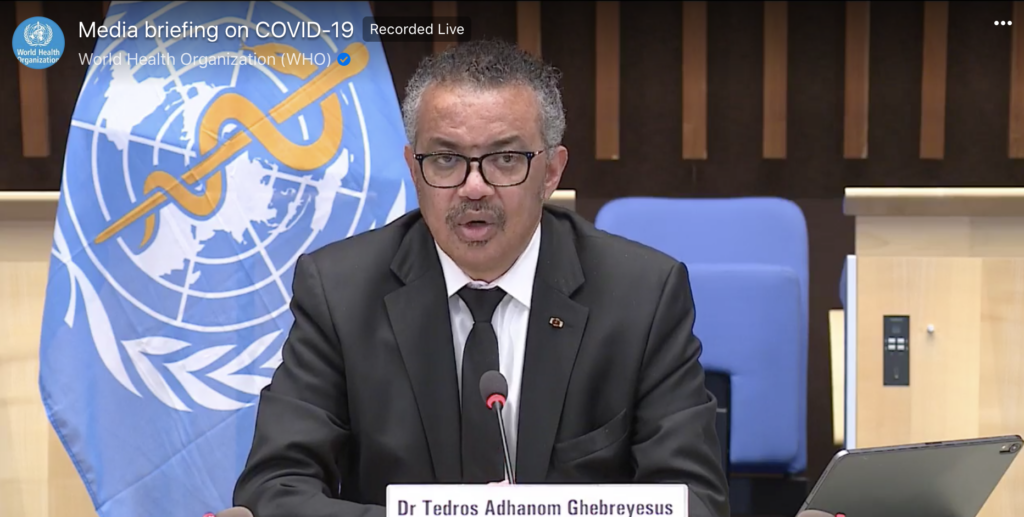
Screen capture from WHO media briefing
Since the beginning of the pandemic, the daily briefing of the director general of the World Health Organization (WHO) has been the main source of information for media outlets around the world that have been covering the spread of COVID-19.
In his opening remarks of the briefing on Monday, August 24, WHO’s director general Tedros Adhanom Ghebreyesus highlighted the efforts of the Knight Center at the University of Texas at Austin in educating journalists across the globe about how to improve the coverage of the coronavirus pandemic.
The director general noted that the Knight Center’s online course, titled “Journalism in a pandemic: Covering COVID-19 now and in the future,” has taught more than 9,000 journalists in 162 countries how to better understand the virus.
The course was created in partnership with the Knight Center, the WHO, and UNESCO, thanks to generous support from the Knight Foundation and the United Nations Development Program (UNDP).
Introduced first as a massive open online course (MOOC) in May, in four languages (English, France, Portuguese and Spanish), “Journalism in a pandemic” is now available as a self-directed course on the new learning portal of the Knight Center at JournalismCourses.org.
The self-directed version of the MOOC is also available in English, French, Portuguese and Spanish. Now, the Knight Center, with the support of UNESCO, is working to make the course available in Chinese, Arabic, Russian and Hindi.
During his opening remarks at the media briefing, director general Tedros Adhanom Ghebreyesus mentioned that “more than 4 million people have enrolled in our training courses through the OpenWHO.org online learning platform.” The OpenWHO platform now has a link to the Knight Center course as well.
Award-winning science journalist Maryn McKenna led the massive open online course (MOOC). During the virtual classes, McKenna walks journalists through best practices for reporting on a pandemic. McKenna was joined by three assistant instructors. Amanda Ross, a Brazilian data-journalist; Federico Kukso, a science journalist and author from Argentina; and Yves Sciama, a science journalist from France and president of the French Association of Science Journalists; were the assistant instructors in Portuguese, Spanish, and French, respectively.
The course covers the past history of pandemics and disasters, and it also breaks down the ways that the virus is currently changing the world –– from prompting healthcare crises to interrupting the international supply chain.
In addition, the course helps journalists understand the vaccine process in order to combat the hype around new “miracle drugs.” In the course, McKenna also brainstorms with journalists about important story angles to pursue in the future as the pandemic continues to unfold.
The course continues to be an important resource for journalists and is applicable to those who have extensive experience covering health and science and those who have just started covering these topics in the midst of the pandemic.
“We are learning new things about this virus every day and journalists are critical to helping us communicate that information to the public in a way that saves lives,” Adhanom Ghebreyesus said in his media briefing. “We will continue to promote science, solutions and solidarity because we believe to our core that we do it best when we do it together.”